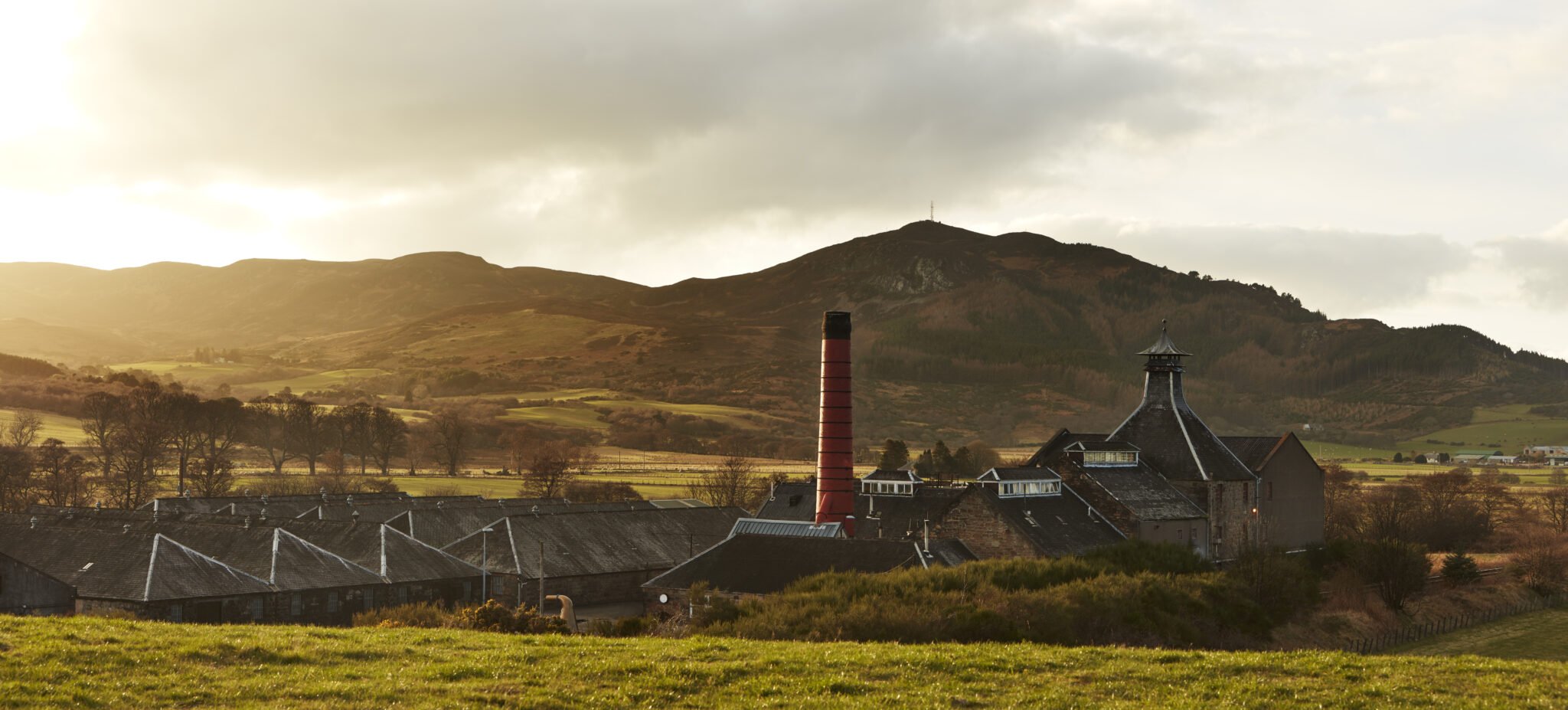Nowadays, whisky is a broad church. Indeed, it is now produced the world over by those seeking to craft a drink that embodies the landscape and culture in which they distill. It is no longer the sole preserve of the Scots, Irish, or the Americans. It’s now the world’s drink and can be made by anyone, for anyone.
And that’s all great. But, on occasion, we relapse into whisky traditionalism and crawl back to single malt Scotches. And it’s worth pointing out that, as with world whiskies, Scotch is also riding one hell of a growth wave at present. Countless new distilleries are opening and existing brands are doubling, even tripling production capacity to meet unprecedented demand.

That demand has created a ghastly auction market for old malts on which unscrupulous drinkers buy and “flip” bottles for profit. And it doesn’t stop at bottles. Drinkers can buy entire casks of new spirit to age over time whilst those who were savvy enough to buy a barrel back in the day before the single malt market went nuts are now finding themselves sitting on a small fortune’s worth of liquid.
But remember, those whopping record prices you are seeking for entire casks and coveted bottlings reflect scarcity and age, not (necessarily) quality. Indeed, as a frequent reviewer of old malts, I can tell you this—it is possible to ruin a Scotch whisky by aging it excessively.
The following whiskies, however, have got the balance between spirit character and wood influence just right. Here are ten single malt Scotch whiskies that you should try in 2022.
Rosebank 31 Year Old
$2,999

Few words excite single malt nerds as much as Rosebank. This distillery in the Scottish Lowlands has been closed for decades. Its ever-dwindling stocks of aging malt (now mostly over 30 years old) have rocketed in price, largely driven by demand from those looking to sample a whisky that would never be replicated again.
have rocketed in price, largely driven by demand from those looking to sample a whisky that would never be replicated again.

That has only been accentuated by the fact that Rosebank had one of the weirdest production approaches seen in the trade. Triple distillation—double is the norm in Scotland—which crudely points towards lighter, softer spirit types coupled with the use of worm tubs which suggests the opposite.
This beautiful mess of distillation approaches is being emulated by Rosebank’s newest owners who are painstakingly rebuilding it and replicating the original production set-up. Whilst they do that, they have been releasing bottlings from the “old,” pre-closure Rosebank.
Their 31-year-old has been put together from scarce stocks laid down just before Rosebank’s last closure in 1993. It has been released by the new owners who are resurrecting Rosebank and will be filling new casks in due course. This well-aged lowlander has retained a fair amount of youth; bright, fresh, and zesty. Indeed, it is rather tropical in its style with pineapple dominating the palate at first before giving way to a sweet bread type thing (banana bread?) which is followed by just a bit of wood influence characterized by light baking spices which fade quickly. Remarkably vibrant given its age and a timely reminder of why Rosebank has the reputation it does. No pressure on the new releases when they come.
Old Pulteney 18 Year Old
$149.99
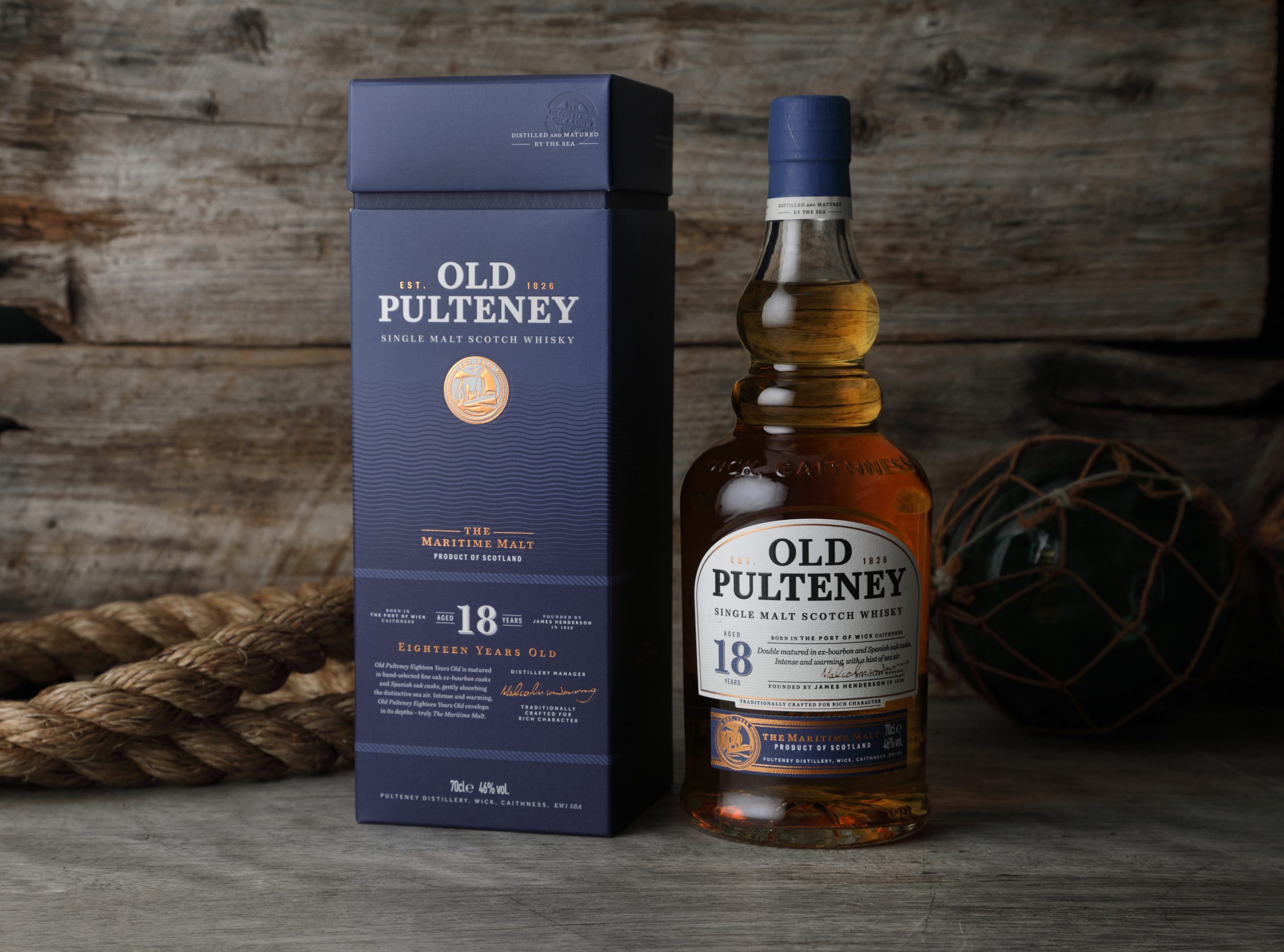
In many ways, the town of Wick, Caithness on Scotland’s far northeastern coast is precisely the sort of place one conjures up when thinking of whisky. This old herring fishing port stands resolute against regular batterings from the cutting winds and gales rolling in from the North Sea. It once had well over a thousand boats in its harbor.
against regular batterings from the cutting winds and gales rolling in from the North Sea. It once had well over a thousand boats in its harbor.
With the boats came people and Wick was soon home to dozens of taverns serving high-proof, unaged spirits from Pulteney Distillery in the town which no doubt took the edge off the aforementioned winds.
Wick’s boozy antics and associated social chaos caught the attention of the local temperance movement shortly after the first world war. In 1922, Wick became one of the counties in Scotland to voluntarily (yes, voluntarily) effect prohibition in an election organized by the “drys” who headed up the temperance movement. The taverns closed, as did the distillery. Normal service didn’t resume for twenty-five years; the alcohol ban nonsense was scrapped in May 1947 and the distillery was back up and running shortly thereafter.
As you’d expect from a distillery that matures its stock on the Caithness coastline, Old Pulteney’s malts have but a faint salty and briny note to them, imparted by the ocean spray blown into the warehouses. This maritime influence is found in their 18-year-old but it is bolstered by insatiable, chocolatey flavors imparted by the wood.
Benromach 40 Year Old
$1907
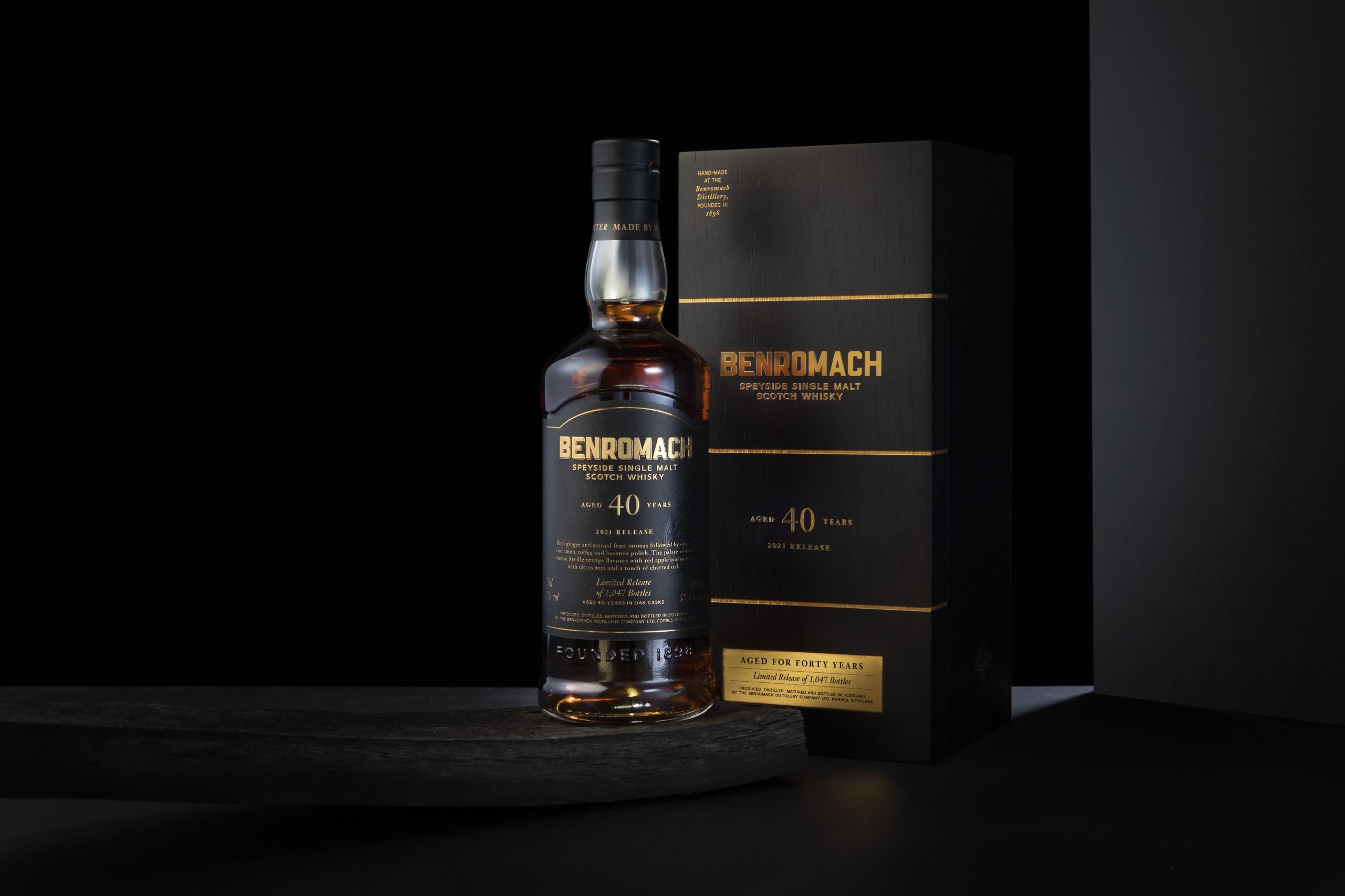
Virtually all of Benromach’s production happens in one small room. The mash tun, wooden washbacks, and single pair of copper stills are all neatly snuggled together in this picture-perfect, white- washed, stone-built Speyside distillery.
washed, stone-built Speyside distillery.
Everything is old-fashioned here. The mill which grinds the barley is over 120 years old, the wash—that sugary barley water produced for yeast is added to kick-off alcohol production—is cloudy to maximize complexity, and the spirit is aged in traditional, earth-floored dunnage warehouses.
Benromach’s 40 Year Old is their oldest release in some time. Maturation is exclusively in first-fill oloroso sherry casks so we’re expecting a spice-driven dram here. A Jamaica cake-esque ginger spice is certainly there on both nose and palate but there is a whole lot more going on here. Stewed fruits, hazelnuts, and even a slight black pepper thing can be found here.
You can tell this whisky has a fair amount of age behind it; the wood influence is undeniably strong but not overbearing by any means. Indeed, this has probably been bottled at a near-perfect age. Indeed, Benromach owners Gordon & MacPhail pride themselves on bottling malts only once they’ve reached their “peak” and they’ve not failed here; this is a truly impressive dram that strikes that balance between spirit character and wood influence with remarkable ease. An absolutely cracking whisky.
GlenAllachie 15 Year Old
$97
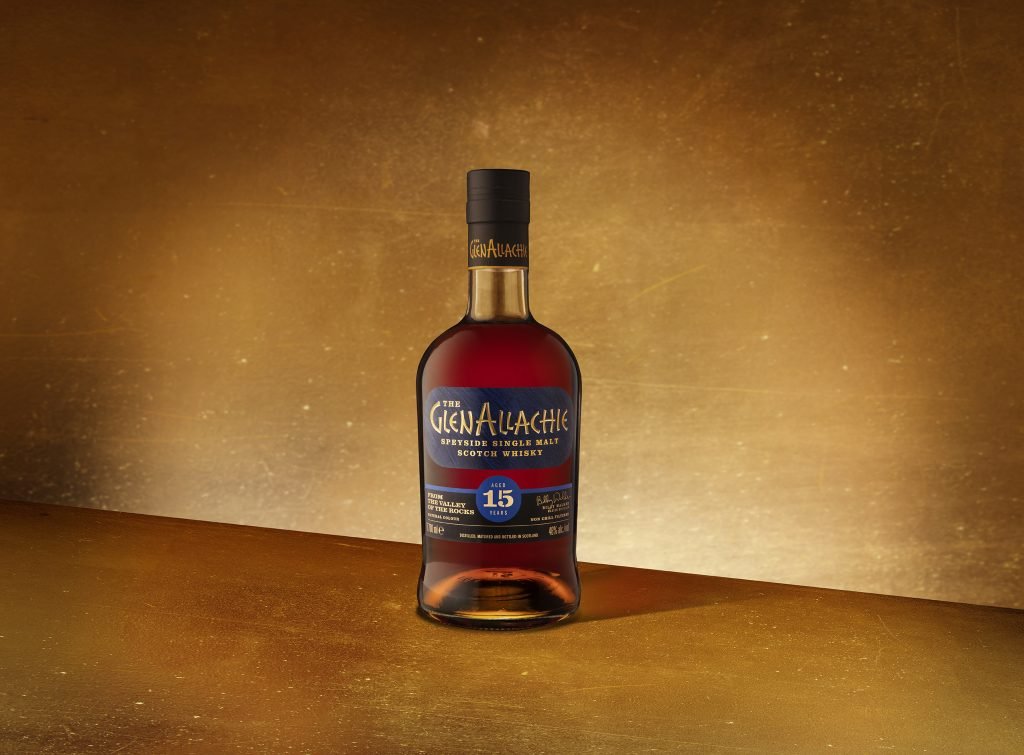
Until quite recently, GlenAllachie was virtually unknown to malt drinkers. It was built in the sixties and has delivered most of its life supplying whisky for blends. 
Then, it was acquired by a consortium headed by legendary distiller Billy Walker, who had previously transformed the likes of Glendronach and Benriach into cult single malts. Billy has dragged GlenAllachie out of the whisky wilderness; the distillery now has its own branded single malt which has quite rapidly become a go-to for malt drinkers with a penchant for rich, wintery Scotches.
Indeed, the “Billy Walker style” of aging whisky—characterized by heavy use of sweet and nutty ex-sherry casks to give a weighty and deep malt—can be seen in their contemporary bottlings. We’re particularly fond of their 15 Year Old which is probably best described as Christmassy; chocolate and cinnamon notes on the nose lead to a palate bursting with treacle, dark roast coffee, and sweet spices. One for the cooler evenings. Welcome back, GlenAllachie.
Balblair 12
$42.40
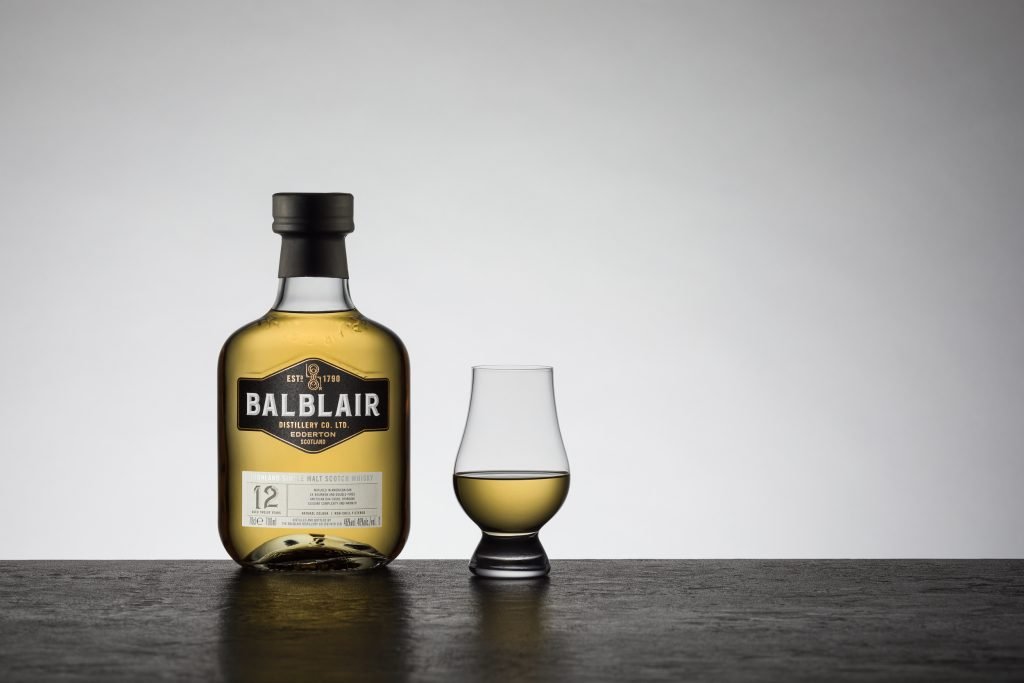
Balblair could not be more old-school highlands if it tried. Here, Scottish barley—often from neighboring farmers—is fermented in wooden washbacks and distilled in short and stumpy copper stills with fat necks. Distillation is all about copper contact; the more of it, the more stripped away from the vapor by the walls of the still, and the lighter the end spirit.
with fat necks. Distillation is all about copper contact; the more of it, the more stripped away from the vapor by the walls of the still, and the lighter the end spirit.
Balblair’s approach does the opposite; spirit vapor passes quickly through those squat stills with relatively little copper contact. It then runs into the lyne-arms—the pipes through which re-condensed spirit leaves the still—which run steeply downward to again minimize purification and keep as much of that weighty, flavourful Balblair character as possible.
Their 12 Year Old shows off that character well with only American oak casks used for maturation. The absence of rich and dominant Sherry seasoned wood—which is found in the rest of Balblair’s line-up—in this bottling allows that spirit character to hold its own. Moreover, a proportion of the casks have been heavily charred; treated with fire for much longer than usual to break down the structure of the oak. This allows the whisky inside to penetrate deeper into the wood and extract much more flavor from it than would otherwise be possible. Here, that has led to a dram driven by vanilla and ground spices. Gentle but that Balblair weight is still very much there.
Glengoyne Cask Strength Batch 009
$66.73
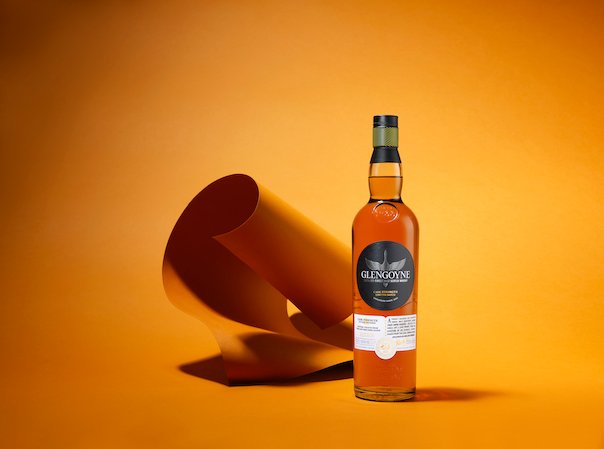
Scotland has several defined whisky “regions” or defined appellation-esque geographies. Highlands, Lowlands, Speyside, and so on. They are helpful yet utterly useless. Whether the taste and profile of a whisky ever truly reflects the land in which it was distilled is another article in itself but I degrees. The (on reflection, perhaps underwhelming?) point here was going to be that Glengoyne Distillery fits within one of them. It sits bang on the “highland line” which divides Scotland’s Lowlands and Highlands. In fact, it distills its whisky in buildings (technically) in the highlands but matures it in warehouses just over the road in the Lowlands.
of a whisky ever truly reflects the land in which it was distilled is another article in itself but I degrees. The (on reflection, perhaps underwhelming?) point here was going to be that Glengoyne Distillery fits within one of them. It sits bang on the “highland line” which divides Scotland’s Lowlands and Highlands. In fact, it distills its whisky in buildings (technically) in the highlands but matures it in warehouses just over the road in the Lowlands.
To move on from that (mildly) interesting trivia, their cask strength bottlings are a particular favorite amongst the Worth team. One reason for that is that they challenge the misconception that Glengoyne’s production approach—defined largely by slow distillations in stills shaped to increase reflux (copper contact between vapor and still)—leads to a light and soft spirit. On the contrary, whilst their production set-up does indeed produce a clean and fruity new-make spirit, it is anything but light. In fact, it is sufficiently weighty and mouth-coating to hold its own during maturation. That really comes across in these cask strength releases which are bottled just shy of 120 proof and are bold, rich, and warming. Beautiful stuff.
Arran 10
$36.96
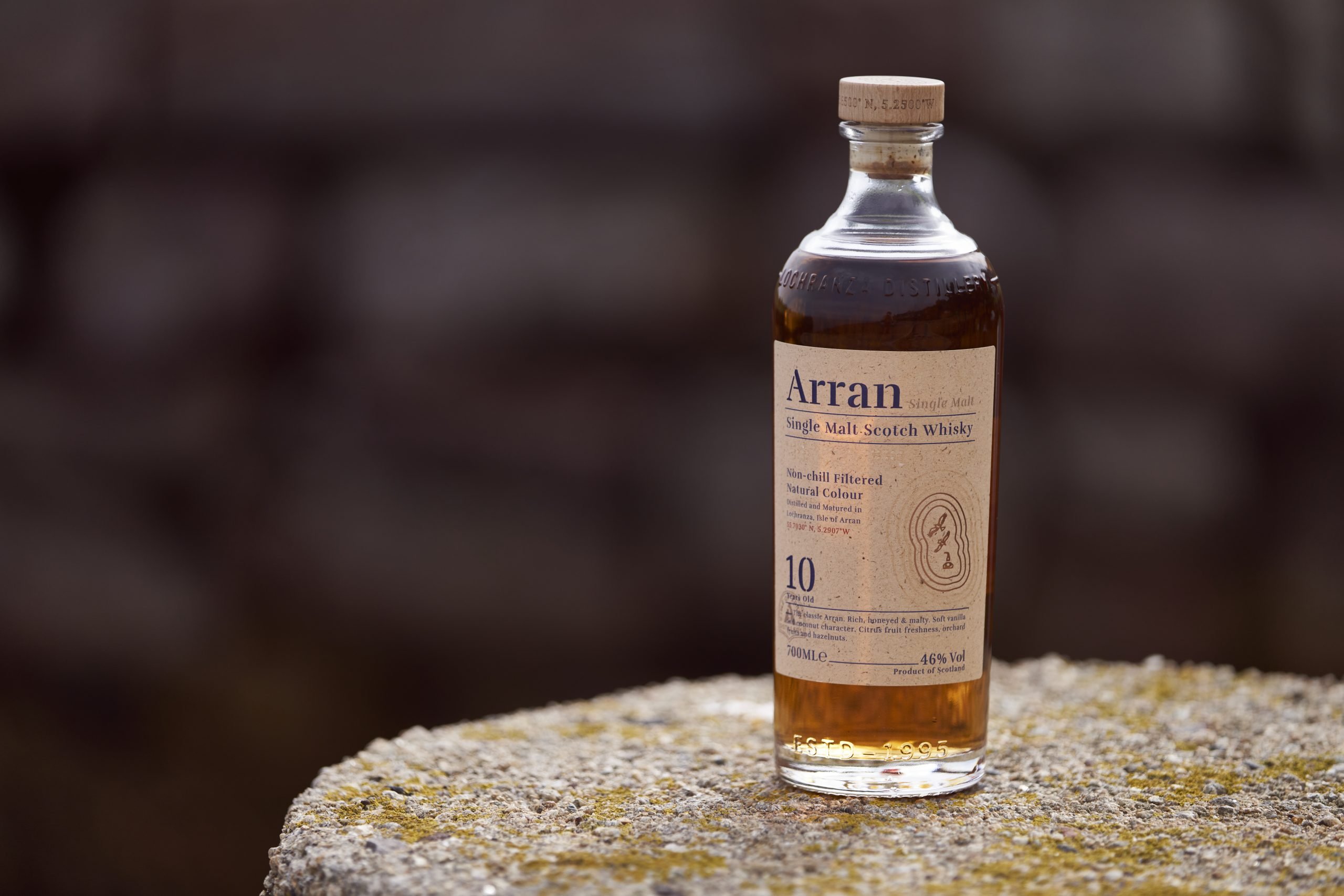
Whiskies made on Scottish islands have an uphill battle, in a sense. By definition, they’re born into rough and wild surroundings which are not short of a tale or two. The temptation is there to lean in and craft furiously smoky, peaty whiskies which reek of the lands in which they’re distilled.
and craft furiously smoky, peaty whiskies which reek of the lands in which they’re distilled.
It’s brave—and rather risky—to do otherwise. Arran Distillery pulled it off. Nestled on the northern tip of the island which bears its name, they’ve refined island malts by going citric. They’re impressively consistent with it, too; lemon and orange notes appear to come through in most bottlings we’ve tried.
Their 10-year-old is no different but those citric flavors are evened out with archetypal American oak characteristics, predominantly vanilla and tablet—the superior Scottish cousin of fudge, with its crumbly dryness. You’d be forgiven for mistaking this for a far older dram than it is; spirit this young is often poorly structured and all over the place. Here, the whisky doesn’t try to do too little nor too much; it doubles down on the vanilla sweetness and we’re thankful for that indeed. A dram beyond its years—a superb whisky.
Tomatin 18
£115.00
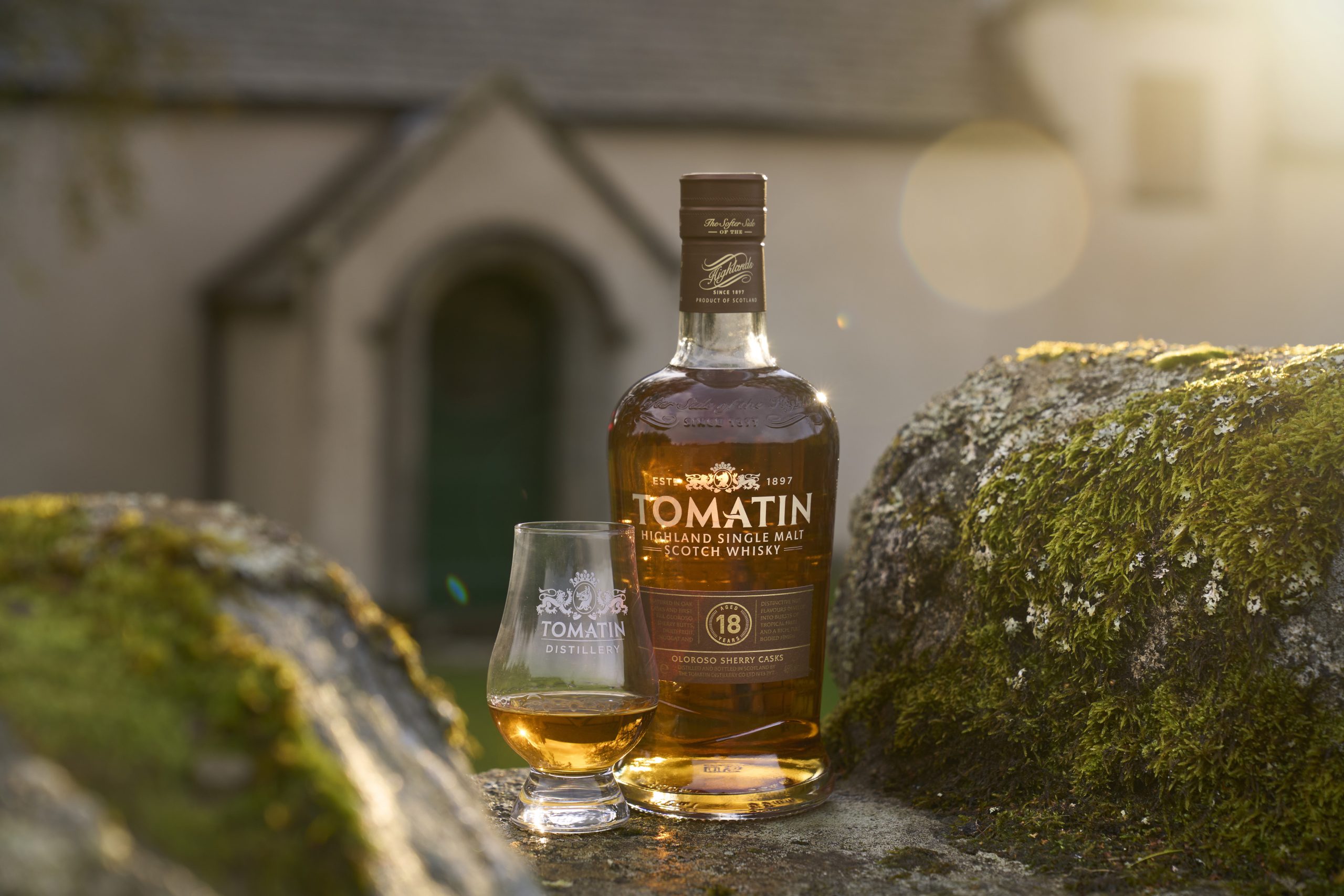
Ask a whisky writer what style of malts they most enjoy writing up and they’ll invariably point to rich and spicy, sherry-matured whiskies that evoke scenes of an old stone bothy nestled in a snow- capped glen with a mighty fire going. Proper winter drams that knock a crisp morning for six. Or they’ll turn to those coastal, iodine-driven malts laden with earthy peat smoke. And you can see why; those whiskies almost write themselves. The imagery is already there.
capped glen with a mighty fire going. Proper winter drams that knock a crisp morning for six. Or they’ll turn to those coastal, iodine-driven malts laden with earthy peat smoke. And you can see why; those whiskies almost write themselves. The imagery is already there.
It’s hard to pitch whiskies that sell themselves on balance. No one can get excited about balance. What even is it? A balance between what? And are we talking about texture? Or flavor?
Begrudgingly, though, sometimes there’s no better word. We find that with Tomatin. This highland malt purposely strays away from both of the aforementioned flavor profile extremes. Their 18-year-old is a case in point. This bourbon matured malt had a secondary maturation in first-fill oloroso casks to combine those classic honeycomb flavors that are similar to American oak with that cinnamon and clove thing that good quality sherry wood always brings to the fore.
And boy, does it work. It’s more autumnal than wintery; quite nutty and dry. Comforting. Water doesn’t add a great deal of value here; it almost closes the dram up. Evidence that this one has probably been bottled at the right strength, perhaps. And given its age, this is a remarkably fresh and vibrant whisky. There’s a lot going on but it just all structurally works, somehow. You could even call it well-balanced. We won’t, but you could.
Ancnoc 18
$89.62
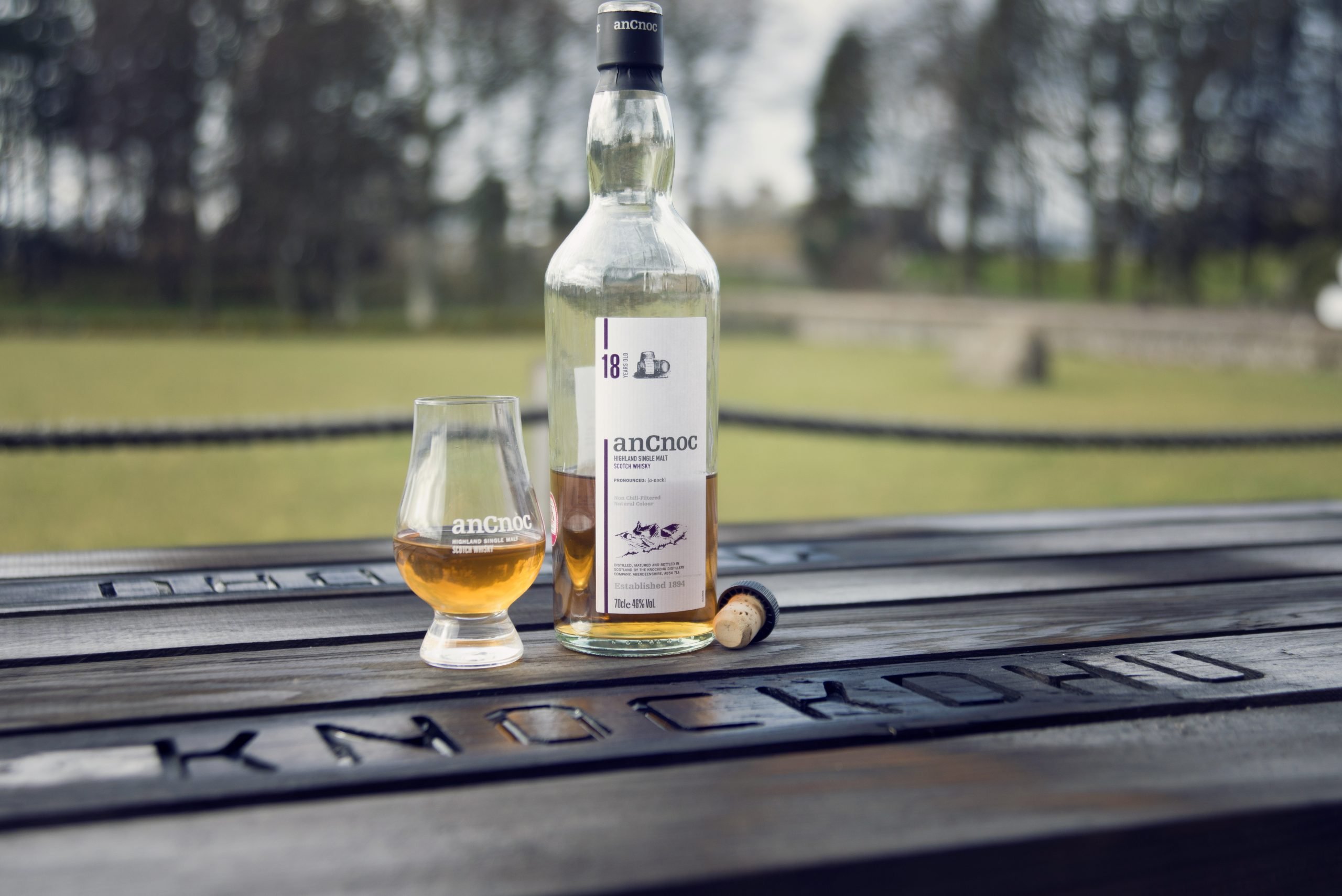
We’ll help you out here. It’s “a-nock”. It’s not even this Speyside distillery’s name—which is Knockdhu—but that of its single malt to avoid mix-ups with neighbor Knockando. 
Anyway, this is a bit of an odd one. Where are the beige labels? And the dodgy stag logos? And the bagpipers? Ancnoc’s getup is refreshingly clean-cut and modern. Ironically, their production is reassuringly traditional; the still room hosts a single pair of tall, slender copper stills virtually identical to those of the distillery’s original pair from 1894. Better still, Ancnoc has resisted the temptation to fully adopt modern-style, shell, and tube condensers to cool the spirit which runs off the stills.
They use also old-school “worm tubs”, vats of water in which a coiled pipe transports the distilled spirit for filling. The water bath cools the pipe—and thus the spirit—more swiftly, minimizing copper contact and thus retaining a bit of heft in this otherwise light, floral spirit.
Their 18-year-old is tricky to figure out, at first. The nose is soft. Too soft. But leave the glass for a few minutes and it opens up. Still gentle but really holds its own; orange chocolate notes on the nose give way to a pepperiness on the palate. Texturally slightly oily. Wouldn’t have called that one at first. The distillery is fairly quiet on the cask composition here, beyond confirming this is a vatting of bourbon barrels and Spanish oloroso butts. We’d be curious to learn the ratio between them; an unmistakably bourbon-esque vanilla sweetness here points to liberal use of American oak. A dark horse but one well worth trying.
Tamdhu Cigar Malt
$225
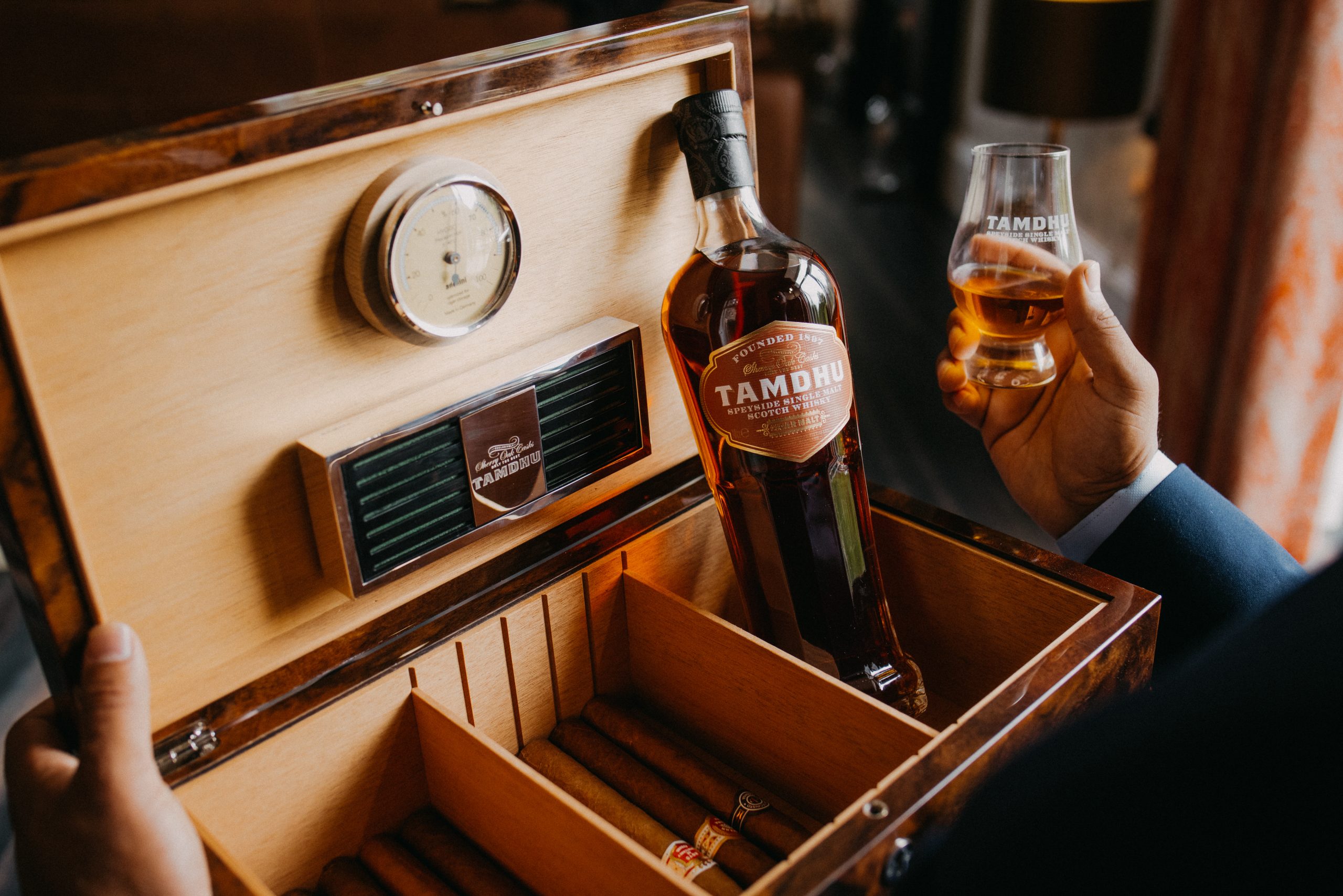
Despite counting some of the most prominent names in Scotch as neighbors including Glenfiddich and Macallan, Tamdhu is practically unheard of amongst malt drinkers. Ironically, that can be blamed on Tamdhu’s own success; their sherry matured, rich spirit quickly became a favorite of brokers and blenders who relied on Tamdhu to add weight to the leading blended Scotches of the day.
blamed on Tamdhu’s own success; their sherry matured, rich spirit quickly became a favorite of brokers and blenders who relied on Tamdhu to add weight to the leading blended Scotches of the day.
Nowadays, though, the focus is very much back on single malts. Tamdhu’s house style is much how it was when it was founded in 1898; maturation is exclusively in ex-sherry casks which make for a whisky that is dark in color, weighty and syrupy in texture, and gloriously rich and spicy on the palate.
Their Cigar Malt exemplifies that style and then some. This small-batch run only uses “first-fill” casks; those that have just been emptied of their sweet sherry contents, as opposed to having been used to mature other whiskies previously. And those casks are crafted from European oak – rather than American – as the former imparts much more spice than the latter.
This is a very well-put-together dram; notwithstanding the lack of an age statement, it comes across as well matured and intricately layered, suggesting that a liberal amount of older stock has been used here. This fantastically rich single malt is rather something; probably our favorite dram of the year. Very well done indeed, Tamdhu.

